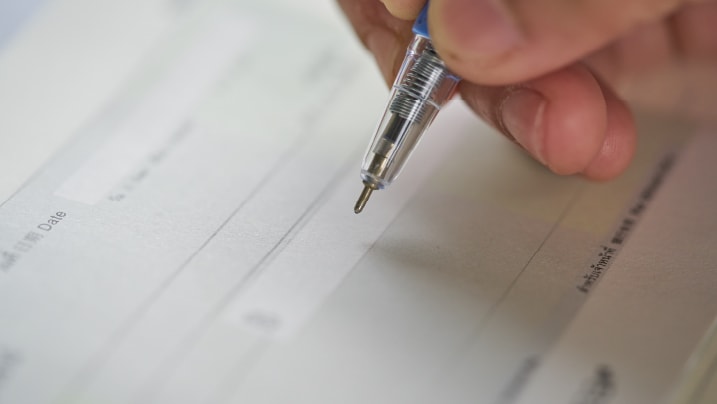CKYC Registry
-
Customer Service Contact us Service request Locate a branch
Find all the help you need
Scan the QR, get our app, and find help on your fingertips

Help CenterSupport topics, Contact us, FAQs and more
-
Login
Are you ready for an upgrade?
Login to the new experience with best features and services
-
Login
Are you ready for an upgrade?
Login to the new experience with best features and services
- Accounts
-
Deposits
IDFC FIRST Bank Deposits
View all Deposits -
Loans
IDFC FIRST Bank Loans
View all Loans - Wealth & Insure
-
Payments
IDFC FIRST Bank Payments
View all Payments -
Cards
IDFC FIRST Bank Cards
View all Cards - Blogs
- Corporate Account
-
Cash Management Services
IDFC FIRST Bank Cash Management Services
View all Cash Management Services - Supply Chain Finance
-
Corporate Lending
IDFC FIRST Bank Lending
View all -
Treasury
IDFC FIRST Bank Treasury
See more details - NBFC Financing
Support topics, Contact us, FAQs and more
- IDFC FIRST Bank Accounts
-
Savings Account
-
Corporate Salary
Account -
Senior Citizens
Savings Account -
First Power
Account -
Current Account
-
NRI Savings
Account -
TASC Institutional
Account -
Savings Account
Interest Calculator
- IDFC FIRST Bank Deposits
-
Fixed Deposit
-
Recurring Deposit
-
NRI Fixed Deposit
-
Safe Deposit Locker
-
FD Calculator
-
RD Calculator
- IDFC FIRST Bank Loans
-
Personal Loan
-
Consumer Durable
Loan -
Home Loan
-
Business Loan
-
Professional Loan
-
Education Loan
-
New Car Loan
-
Pre-owned Car Loan
-
Two Wheeler Loan
-
Pre-owned Two
Wheeler Loan -
Commercial Vehicle
Loan -
Gold Loan
-
Loan Against Property
-
Loan Against Securities
-
Easy Buy EMI card
-
Personal Loan
EMI Calculator -
Education Loan
EMI Calculator -
Home Loan
EMI Calculator
- IDFC FIRST Bank Wealth & Insure
-
FIRST Select
-
FIRST Wealth
-
FIRST Private
-
Mutual Funds
-
Sovereign Gold Bond
-
Demat Account
-
Term Insurance
-
Life Insurance
-
Health Insurance
-
General Insurance
-
Bonds
-
Loan Against
Securities -
Portfolio Management
Service
- IDFC FIRST Bank Payments
-
FASTag
-
Credit Card
Bill Payments -
UPI
-
Funds Transfer
-
Forex Services
-
Pay Loan EMI
- IDFC FIRST Bank Cards
-
Ashva :
Metal Credit Card -
Mayura :
Metal Credit Card -
FIRST Millennia
Credit Card -
FIRST Classic
Credit Card -
FIRST Select
Credit Card -
FIRST Wealth
Credit Card -
FIRST WOW!
Credit Card -
Deals
-
Debit Cards
-
Co-branded Cards
-
Credit Card
EMI Calculator -
FIRST Corporate
Credit Card -
FIRST Purchase
Credit Card -
FIRST Business
Credit Card
- Premium Metal Credit Cards
-
AshvaLifestyle1% Forex₹2,999
-
MayuraLifestyleZero Forex₹5,999
-
FIRST PrivateInvite Only
- Best for travellers
-
MayuraZero ForexMetal₹5,999
-
Ashva1% ForexMetal₹2,999
-
FIRST WOW!Zero ForexTravelLifetime Free
-
FIRST SWYPTravel OffersEMI₹499
-
FIRST Select1.99% ForexLifestyleLifetime Free
-
FIRST Wealth1.5% ForexLifestyleLifetime Free
-
Club VistaraTravelLifestyle₹4,999
-
IndiGo IDFC FIRST Dual Credit CardTravelLifestyle₹4,999
- Max benefits, Free for life
-
FIRST Classic10X RewardsShoppingNever Expiring Rewards
-
FIRST Millennia10X RewardsShoppingNever Expiring Rewards
-
FIRST Select10X RewardsLifestyle1.99% Forex
-
FIRST Wealth10X RewardsLifestyle1.5% Forex
-
FIRST WOW!RewardsTravelZero Forex
-
LIC ClassicRewardsInsuranceShopping
-
LIC SelectRewardsInsuranceShopping
- Reward Multipliers
-
AshvaLifestyleMetal₹2,999
-
MayuraLifestyleZero Forex₹5,999
-
FIRST ClassicNever Expiring RewardsShoppingLifetime Free
-
FIRST MillenniaNever Expiring RewardsShoppingLifetime Free
-
FIRST SelectNever Expiring RewardsLifestyleLifetime Free
-
FIRST WealthNever Expiring RewardsLifestyleLifetime Free
- Rewards & Credit on UPI
-
FIRST Power+FuelUPI₹499
-
FIRST PowerFuelUPI₹199
-
FIRST EA₹NVirtual1% Cashback₹499
-
FIRST DigitalVirtualUPI₹199
-
IndiGo IDFC FIRST Dual Credit CardUPITravelDual cards
- Fuel and Savings
-
FIRST PowerRewardsUPI₹199
-
FIRST Power+RewardsUPI₹499
-
LIC ClassicRewardsInsuranceShopping
-
LIC SelectRewardsInsuranceShopping
- Express and Flaunt
-
AshvaMetal1% Forex₹2,999
-
MayuraMetalZero Forex₹5,999
-
FIRST SWYPEMIOfferMAX₹499
-
FIRST MillenniaRewardsShoppingLifetime Free
- FD Backed rewarding Credit Cards for all
-
FIRST EA₹NVirtualCashback₹499
-
FIRST WOW!Zero ForexTravelLifetime Free
-
CreditPro Balance TransferTransfer & SaveReduce InterestPay Smartly
- IDFC FIRST Bank NRI Forex Solutions
-
Send money to India-Wire transfer
-
Send money to India-Digitally
-
Send money abroad
-
Max Returns FD (INR)
- IDFC FIRST Bank MSME Accounts
-
Platinum Current
Account -
Gold
Current Account -
Silver Plus
Current Account -
Merchant Multiplier
Account -
Agri Multiplier
Account -
TASC Institutional
Account -
Dynamic Current
Account -
World business
Account -
First Startup
Current Account
- IDFC FIRST Bank Business Loans
-
Business Loan
-
Professional Loan
-
Loan Against Property
-
Business Loan for Women
-
Working Capital Loan
-
Construction Equipment Loan
-
Machinery Loan
-
Healthcare Equipment Loan
- IDFC FIRST Bank Business Solutions
-
Payment Solutions
-
Tax Payments
-
Doorstep Banking
-
Point of Sale (POS)
-
Escrow Accounts
-
NACH
-
Payment Gateway
-
UPI
-
Virtual Accounts
-
As per amendment in the Income Tax Rules, PAN or Aadhaar are to be mandatorily quoted for cash deposit or withdrawal aggregating to Rupees twenty lakhs or more in a FY. Please update your PAN or Aadhaar. Kindly reach out to the Bank’s contact center on 1800 10 888 or visit the nearest IDFC FIRST Bank branch for further queries.
-
-
Most Searched
Sorry!
We couldn’t find ‘’ in our website
Here is what you can do :
- Try checking the spelling and search
- Search from below suggestions instead
- Widen your search & try a more generic keyword
Suggested
Get a Credit Card
Enjoy Zero Charges on All Commonly Used Savings Account Services
Open Account Now
Savings Account
Account Payee Cheque: Meaning, features & how to issue
Key Takeaways
The Account Payee or A/C Payee cheque is a secured instrument of payment, considered as one of the safest types of cheques, using which one can transfer money from his/her bank account into the payee's account named on the cheque.
To issue an A/C Payee cheque, you need to draw two parallel lines, at the top left corner of the cheque, known as 'crossing' the cheque.
To encash a crossed cheque, the payee needs to visit his/her bank branch and deposit it into their own savings account by filling out the cheque deposit form. Upon verification and clearance, the money is credited, within the stipulated time as specified by the bank.
After opening a bank account, you will be provided with a kit in an envelope. Inside the envelope, you will find important elements such as an ATM/Debit Card, a Welcome Letter and a Chequebook.
If you are new to the world of banking, it is rather usual to come across the term ‘account payee or a/c payee cheque’ and not quite understand what do they actually mean. To learn more about the term in detail, , read on.
What is an account payee cheque?
The account payee/ac payee cheque can be defined as a secured type of cheque. That’s because, in this variant of cheques, it is possible for you to transfer money from your bank account only into the payee's account. Furthermore, the recipient of the account payee cheque does not have the authorisation for marking the cheque for anybody else. To further your understanding regarding this type of cheque, it is imperative for you to be aware of the account payee cheque meaning and the three terms mentioned below :
Three important terms associated with account payee cheques:
i) Drawer
The drawer is the entity or the account holder who is writing the cheque and signs on the cheque. Generally, the drawer is the individual whose account is debited.
READ MORE
ii) Drawee
The drawee is the financial institution to which you are writing the cheque. Generally, the bank is the drawee. The drawer is supposed to leave an instruction to the drawee to deduct a sum from their bank account.
iii) Payee
The payee can be described as the account holder or the corporate entity to whom you are transferring money. The cheque is addressed to the name of the payee.
How to issue an account payee cheque?
Here are the steps that are involved in the issue of an account payee cheque:
· While issuing an account payee cheque, it is important for you to draw two parallel crossing lines. You need to draw the said parallel line at the top of the left corner. This step is also referred to as crossing the cheque.
· Right in the middle of the two parallel lines, write ‘account payee only’. It is important to note that without mentioning these words, the bank or drawee will not consider the cheque as the account payee cheque.
Why write an account payee cheque?
The primary benefit of account payee cheques is that they are the safest variant of cheques. That is because the written sum on the cheque can only be deposited into the account of the payee, ensuring that the chances of misuse are very low.
After receiving the payment through this cheque, the payee can’t endorse the account payee cheque to anyone else. This only adds to the security of these cheques. Apart from the secured nature of these cheques, it is also imperative to note that these cheques come with a validity of only three months.
Account payee cheques are considered to be one of the safest variants of cheques because the sum written on the cheque can only be deposited into the account of the payee
If you ever receive an account payee cheque, it is not possible for you to cash it instantly. To encash it, you are required to deposit the cheque into your Savings Account by filling out the cheque deposit form. After filling out the form, clip the cheque to the form and drop it inside the cheque deposit box or hand it over to the bank official. After that, the bank will deposit the money into your account in two or more days.
If you are looking for an easier way of transferring funds, you can download IDFC FIRST Bank’s mobile banking app without paying any additional charges for transactions. Also, you can conduct online money transfers through IMPS, NEFT, and RTGS for seamless online transaction with IDFC FIRST Bank Savings Account.
Conclusion
Understanding the function and process of account payee cheques can add a layer of security to your banking transactions. Account payee cheques ensure that funds reach the intended recipient’s bank account directly, making them a secure mode of fund transfers. If you often handle cheque transactions, being well-versed in the process can help you manage payments safely. Additionally, with IDFC FIRST Bank’s digital banking options, you can explore seamless online transfers via IMPS, NEFT, and RTGS, making fund transfers even more convenient and efficient.
Disclaimer
The contents of this article/infographic/picture/video are meant solely for information purposes. The contents are generic in nature and for informational purposes only. It is not a substitute for specific advice in your own circumstances. The information is subject to updation, completion, revision, verification and amendment and the same may change materially. The information is not intended for distribution or use by any person in any jurisdiction where such distribution or use would be contrary to law or regulation or would subject IDFC FIRST Bank or its affiliates to any licensing or registration requirements. IDFC FIRST Bank shall not be responsible for any direct/indirect loss or liability incurred by the reader for taking any financial decisions based on the contents and information mentioned. Please consult your financial advisor before making any financial decision.
The features, benefits and offers mentioned in the article are applicable as on the day of publication of this blog and is subject to change without notice. The contents herein are also subject to other product specific terms and conditions and any third party terms and conditions, as applicable. Please refer our website www.idfcfirstbank.com for latest updates.

























